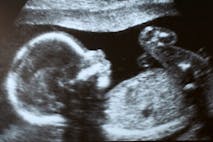
Disability rights groups file lawsuit to stop Delaware assisted suicide law
Angeline Tan
·
Was a woman left to ‘bleed out’ in the hospital parking lot because of a pro-life law?
During the presidential debate on Tuesday, Vice President Kamala Harris claimed pro-life laws make it criminal for a doctor or nurse to provide health care. To prove her point, she noted the story of a woman who was allegedly left to “bleed out” in the parking lot rather than get the abortion Harris claimed she needed.
There was, in fact, a story making headlines in the spring of 2023 that involved a woman who was allegedly told by doctors in Oklahoma that she had to wait in the parking lot “until you bleed out” because of the state’s pro-life law. The woman at the center of the story, Jaci Statton, told People that just a few weeks after learning she was pregnant, she was washing dishes when “all of a sudden I felt really sick and I looked down and saw blood soaked through my jeans. She went to a hospital where blood work was done, and she was told she was likely experiencing a miscarriage, and should follow up with her doctor.
A partial molar pregnancy
The following day, her OB/GYN told Statton she had a non-viable, partial molar pregnancy. There are molar pregnancies and partial molar pregnancies. Molar pregnancies occur when sperm fertilizes an empty egg, and tumors grow in the uterus that can look like fluid-filled sacs. Molar pregnancy can cause a rare form of cancer.
In a partial molar pregnancy, as Statton had, two sperm fertilize an egg, causing the embryo to have 69 chromosomes. The chances that an embryo or fetus will have a heartbeat during a partial molar pregnancy are rare — and according to the Mayo Clinic, a miscarriage will occur early in pregnancy. It is recommended that the abnormal cells be removed using a D&C procedure, and some women who experience a molar pregnancy will need chemotherapy if cancerous cells remain.
Research shows that partial molar pregnancies are often misdiagnosed as a missed miscarriage, and a baby survives in less than 25% of cases. However, there are at least two known cases of a fetus who survived a partial molar pregnancy, and there may be others.
In addition, research regarding partial molar pregnancy with a baby who has “normal karyotype” revealed: “Although anemia is one of the risk factors that jeopardize the fetus in the case of partial molar pregnancy, termination is not indicated when the fetus is normal and no complications have occurred.”
Statton’s doctor said there were cysts surrounding where the embryo should be, and a pre-cancerous cyst in her uterus had ruptured. “My doctor said, ‘We’re in a Catholic hospital so I’m not supposed to talk about this. But your baby will not make it, and this is very dangerous. You only have one option, and we can’t do that here. I’m getting you transferred somewhere else,'” recalled Statton.
She was sent to the University of Oklahoma Medical Center, but she said the ultrasound tech found a fetal heartbeat and spoke out in opposition to the abortion. They told him, “You need to look again,” but the abortion was not committed that day.
Statton was ultimately transferred to three different hospitals. The final one in the state was Oklahoma Children’s Hospital, where staff said her condition had worsened but there was nothing they could do.
“We can’t keep you here just for nausea and we can’t even help you if you start bleeding again,” she said the doctors told her. “Unless it’s a huge emergency, unless you are crashing in front of us or your blood pressure goes up so high that you’re having a heart attack, we can’t help you.”
Article continues below
Dear Reader,
Have you ever wanted to share the miracle of human development with little ones? Live Action is proud to present the "Baby Olivia" board book, which presents the content of Live Action's "Baby Olivia" fetal development video in a fun, new format. It's perfect for helping little minds understand the complex and beautiful process of human development in the womb.
Receive our brand new Baby Olivia board book when you give a one-time gift of $30 or more (or begin a new monthly gift of $15 or more).
She said they told her, “The best advice we can give you, is to go sit in the parking lot until you bleed out, and we will be ready to help you when that happens.”
Eventually, Statton left the state to have a D&C in Kansas where staff told her, “You’re not making the wrong decision. If you don’t do this, you’re going to die.”
Oklahoma law
On May 25, 2022, Oklahoma’s HB 4327 was enacted to protect most preborn children from abortion. There are two exceptions to the law — one for the life of the mother and one for pregnancies resulting from rape, sexual assault, or incest that has been reported to the police. The law states:
… a person shall not knowingly perform or attempt to perform an abortion unless: 1. The abortion is necessary to save the life of a pregnant woman in a medical emergency;
Based on this exception and doctors’ statements that Statton’s life was at risk, it would have been completely legal for Statton to undergo an abortion in Oklahoma.
In addition, waiting until a woman is “crashing” or “having a heart attack” is not necessary, which was confirmed by the state Supreme Court in March 2023 when it ruled that abortion is allowed when a woman’s health, not just her life, is at risk.
Biden administration denies Statton’s complaint
Statton filed a complaint with the Department of Health and Human Services under the Emergency Medical Treatment and Labor Act (EMTALA). The Biden administration had already said EMTALA trumps state abortion laws that lack exceptions for medical emergencies. However, the Biden administration rejected Statton’s claim, saying that OU Health University of Oklahoma Medical Center did not violate federal law when refusing to give her an abortion.
That’s likely because embryos created in molar or partial molar pregnancy are not considered embryos because, in the majority of cases, they have not developed normally and will not have a heartbeat.
Live Action News is pro-life news and commentary from a pro-life perspective.
Contact editor@liveaction.org for questions, corrections, or if you are seeking permission to reprint any Live Action News content.
Guest Articles: To submit a guest article to Live Action News, email editor@liveaction.org with an attached Word document of 800-1000 words. Please also attach any photos relevant to your submission if applicable. If your submission is accepted for publication, you will be notified within three weeks. Guest articles are not compensated (see our Open License Agreement). Thank you for your interest in Live Action News!

Angeline Tan
·
Analysis
Angeline Tan
·
Analysis
Cassy Cooke
·
Politics
Madison Evans
·
Opinion
Nancy Flanders
·
Investigative
Carole Novielli
·
Human Interest
Nancy Flanders
·
Investigative
Nancy Flanders
·
Pop Culture
Nancy Flanders
·
Human Interest
Nancy Flanders
·
Human Interest
Nancy Flanders
·